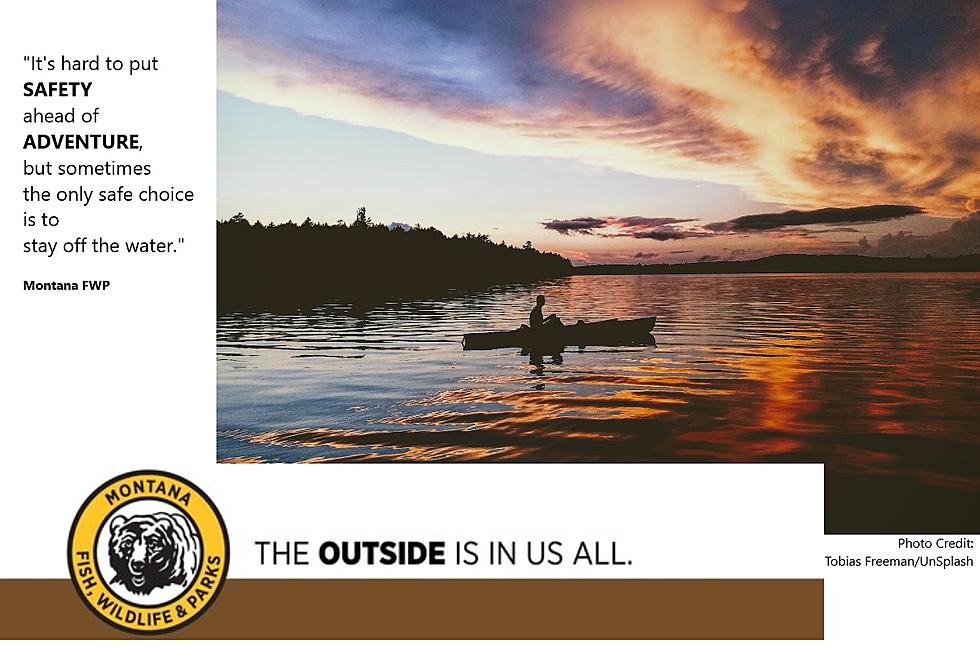
FWP: Boaters Should Be Prepared for High Water
With the high levels of snow and very warm temperatures this spring, the Montana Department of Fish, Wildlife and Parks reminds boaters that rivers will be running high and fash, and lake levels will be higher than normal for a few weeks. The combination of high water and high expectations can be deadly when conditions are too extreme for safe boating.
It can be hard to put safety ahead of adventure when you've spent hours planning a boat trip, but sometimes the only safe choice is to stay off the water.
When you're preparing for a day on the water, be sure you have a well-fitted U.S. Coast Guard approved personal flotation device, or life jacket, for everyone on board, and make sure everyone is wearing one.. If you are in a boat or even near a rapidly flowing river, wear a life jacket – it could save your life. If you fall into cold water without a life jacket, you could drown in a matter of minutes.
There are times, especially for less experienced boaters and floaters, when the dangers aren't readily apparent until they've entered the water. Boaters should make a study of high-water hazards and be prepared to cope with dangers that may include:
- debris in water
- cold water
- logs that get lodged together and block a boat’s ability to float through
- bridge abutments that catch debris and create swirling waves
- turbid, muddy water that makes other hazards in the water difficult or impossible to see
- the possibility of capsizing and having to rescue yourself or others
- boaters who get wet and need to be warmed quickly to prevent hypothermia
Here are some tips for navigating the dangers of high water:
- Don't boat alone.
- Make sure someone on shore knows where you plan to put in, take out and when you plan to return.
- If the water at a stage you wouldn't choose to swim in, then don't launch your boat either.
- If you do launch, wear a well-fitted life jacket and, in rough waters, a helmet.
Boaters should not assume a river is the same as it was during a previous trip. Rivers change their channels, and new hazards, such as overhanging or broken tree branches and log jams, may exist.
Make it part of your plan to reschedule a trip if conditions deteriorate.
Anyone planning to recreate near water should first check the FWP website for safety information. Go to fwp.mt.gov/activities/boating/safety.
Additional fishing access site closures and restrictions are likely as spring runoff continues. For updates, visit fwp.mt.gov/news/current-closures-restrictions.
More From KSEN AM 1150









